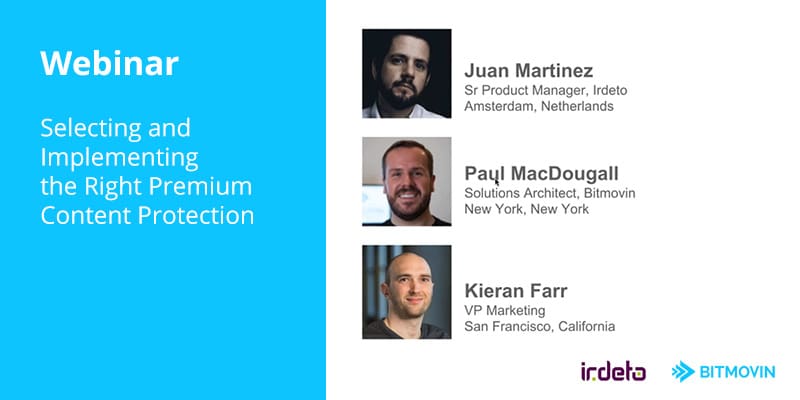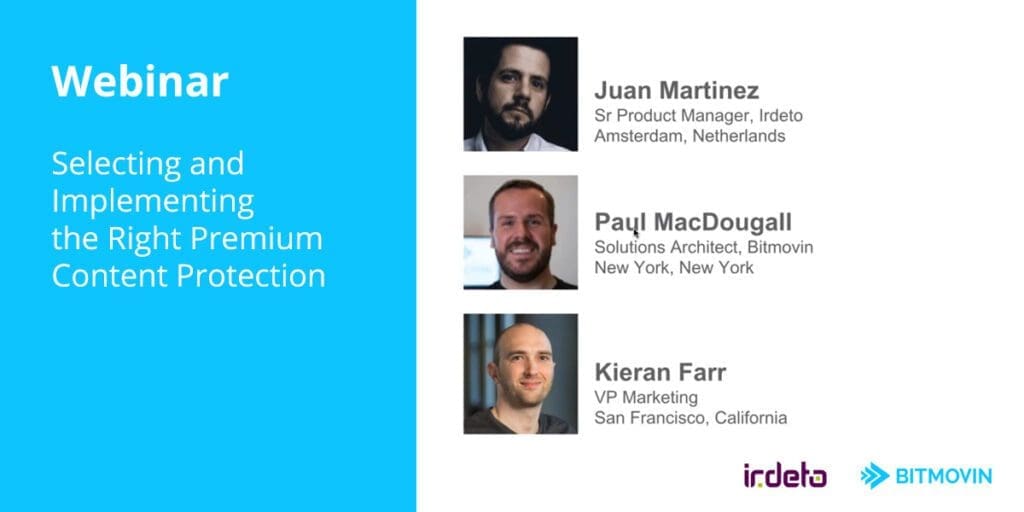
Bitmovin, in combination with our partners Irdeto, hosted a webinar to present the common approaches to Digital Rights Management in 2018 and the changes coming to common workflows with CMAF. The following is a brief summary of the topics discussed and solutions that were presented.
An Overview of DRM
The webinar begins by anwering the question: What is DRM? In short, DRM is a technology designed to protect monetization models from copyright infringement and is a common requirement for many content providers. In essence it provides you the ability to control who and how people can consume your content.
DRM is a very fragmented technology. As with many other components in the video delivery workflow, a DRM solution needs to work across multiple platforms, browsers and devices. This has lead to the development of several different DRM technologies. As we discovered in last years video developer report, where we surveyed the video developer community, most content providers are using multiple DRM technologies. You can see this in the overlap in percentages in the graph below.

The most popular DRM technologies are Google Widevine, Microsoft PlayReady and Apple Fairplay. Each one has its own unique set of compatabilities and configurations. Google Widevine is compatible with systems like Android, Chrome and Firefox and supports DASH with CENCE. Apple Fairplay on the other hand is mainly compatible with Safari and Mac devices. Microsoft PlayReady has perhaps the broadest device coverage, as it includes consoles like Playstation and XBox as well as Edge and Internet Explorer. In the webinar recording you can listen to a detailed explanation of each of these technologies and how they often need to be combined into a multi-DRM solution. This section is presented by Bitmovin Solution Architect, Paul MacDougall.
How does DRM work?
DRM is an integrated part of the video workflow. After a video asset is ingested (sent to the encoding platform), it is encoded and then packaged. It is during the packaging process that the DRM encryption happens with media keys from one or more DRM servers. After packaging the adaptive bitrate streaming files are sent to storage and then streamed through a CDN to the end user application. This is where the encryption is detected, the license is checked and the video is unencrypted fore the user, or not, depending on whether the user is successfully authenticated. This workflow is explained in detail in the webinar by Juan Matinez, Senior Product Manager at Irdeto.
What is changing and what is happening next in DRM?
The webinar also goes into some detail about other recent changes in the DRM landscape such as CMAF and how that might make things easier. You will also hear about other modern applications of DRM technology such as offline DRM which allows the user to download a VoD video and play from their local drive without any risk of content theft.
What to learn more? The State of the Web 2018: DRM Whitepaper is a comprehensive explanation of Digital Rights Management giving you everything you need to build your DRM or Multi-DRM system, from encoding inputs through to playback.




